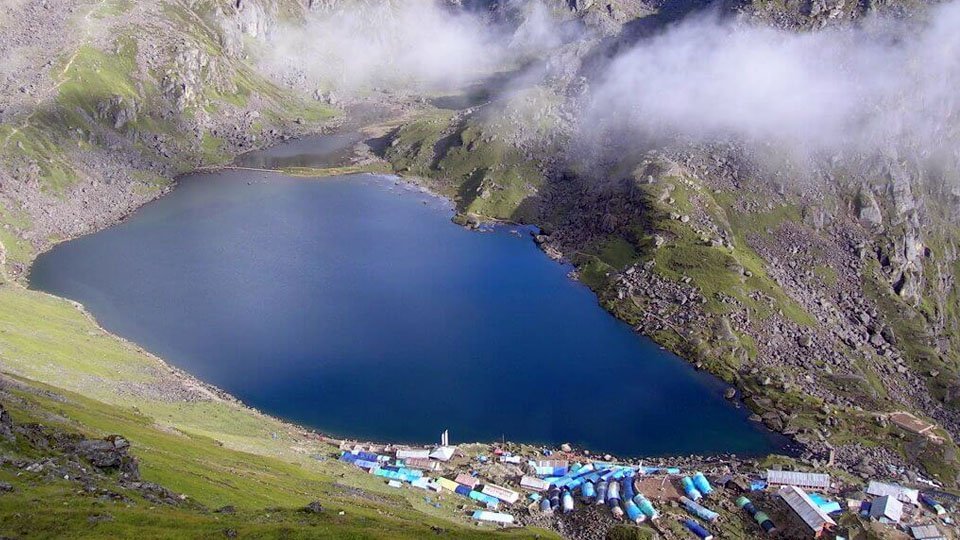If you’re searching for a sacred, off-the-beaten-path trekking destination in Nepal, the Bhairab Kunda trek offers a perfect blend of spirituality, natural beauty, and cultural richness. Situated at an altitude of around 4,250 meters in the Sindhupalchok district near the Tibetan border, Bhairab Kunda is a revered high-altitude lake named after the Hindu god Bhairab (a fierce manifestation of Shiva).
This blog will explore everything you need to know about Bhairab Kunda, from its religious significance to trek details, best seasons, and why it’s a hidden gem in Nepal’s Himalayan trekking scene.

Bhairab Kunda
Where is Bhairab Kunda Located?
It lies northeast of Kathmandu, near the Nepal-Tibet border in the Sindhupalchok district. It’s part of the Panch Pokhari and Langtang National Park region, although it remains relatively untouched compared to other popular trekking trails.
Religious & Cultural Significance
Bhairab Kunda is considered a sacred pilgrimage site for both Hindus and Buddhists. Thousands of devotees visit the lake during Janai Purnima (usually in August) to take a holy dip in the icy water, believing it purifies sins and brings spiritual awakening. A temple dedicated to Lord Bhairab stands near the lake, making it a key spiritual hub.
Trekking Overview
Trek Duration: 7–10 days
Starting Point: Jalbire or Larcha (can vary)
Max Altitude: 4,250 meters (Bhairab Kunda)
Difficulty: Moderate
Accommodation: Teahouses and basic lodges
Permits Required: TIMS and National Park Entry
The trail passes through Tamang villages, thick forests of rhododendron and pine, and offers panoramic views of Langtang, Jugal Himal, Rolwaling, and even Everest on clear days.
Best Time to Visit Bhairab Kunda
Spring (March–May): Ideal for rhododendron blooms and pleasant weather
Autumn (Sept–Nov): Clear skies and the best mountain views
Monsoon (June–Aug): Popular for religious pilgrimage, but slippery trails
Winter (Dec–Feb): Extremely cold and snowy, not recommended
Major Highlights of Bhairab Kunda Trek
Visit the sacred Bhairab Kunda lake and Bhairab Temple
Less crowded and peaceful compared to mainstream trekking routes
Interact with the Tamang and Sherpa cultures
Stunning sunrise views over Jugal Himal and surrounding peaks
Opportunity to explore offbeat trails and camp in nature
Packing Tips
Warm layered clothing (temperatures can drop below zero)
Good hiking boots and waterproof gear
Snacks, purification tablets, and power banks
Sleeping bag (if camping) and personal first aid kit
Local Experience
You’ll likely encounter local Tamang communities along the way, offering a rich cultural exchange. Homestays in villages like Chanaute and Karthali provide authentic experiences, traditional meals, and warm hospitality.
Suggested Itinerary
Day 1: Drive from Kathmandu to Jalbire
Day 2: Trek to Chanaute
Day 3: Trek to Khani Gaun
Day 4: Trek to Forest Camp
Day 5: Trek to Pati
Day 6: Trek to Bhairab Kunda
Day 7: Rest day for exploration
Day 8: Return trek to Forest Camp
Day 9: Trek to Jalbire
Day 10: Drive back to Kathmandu

